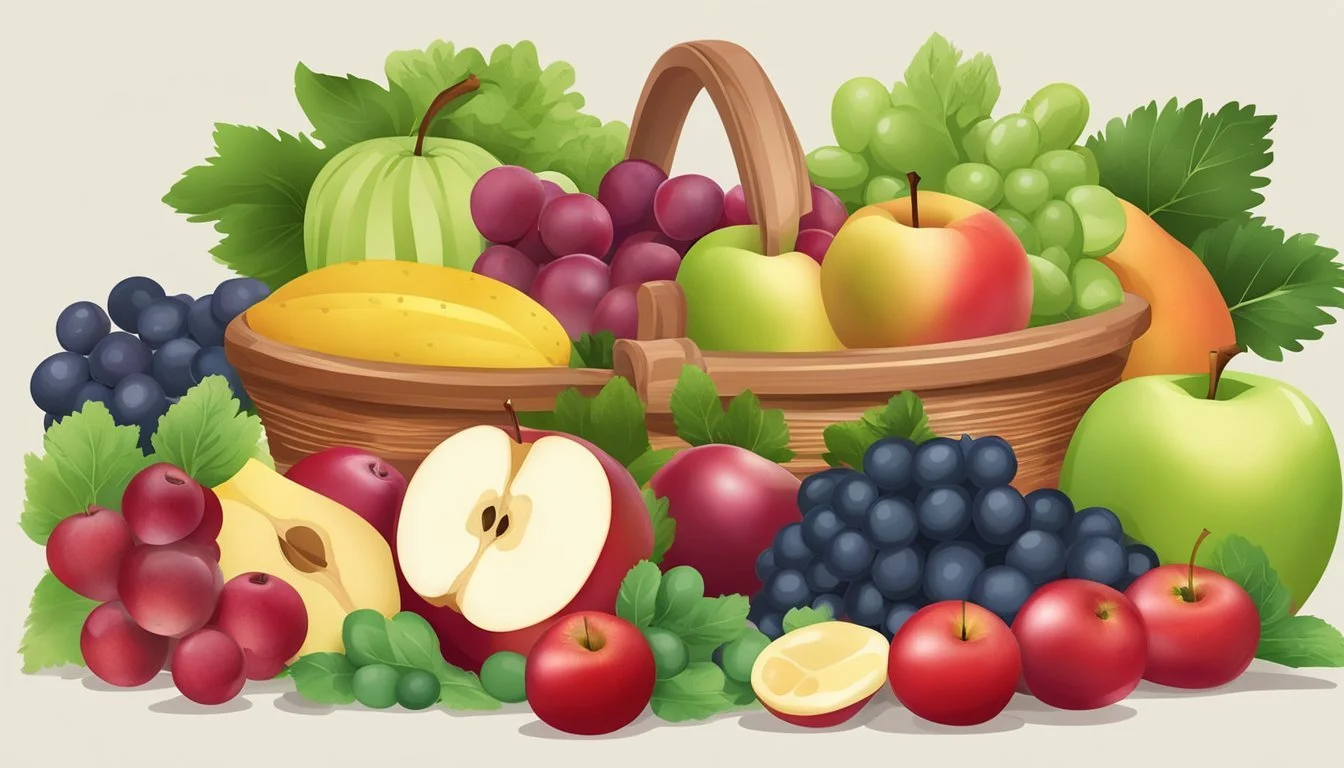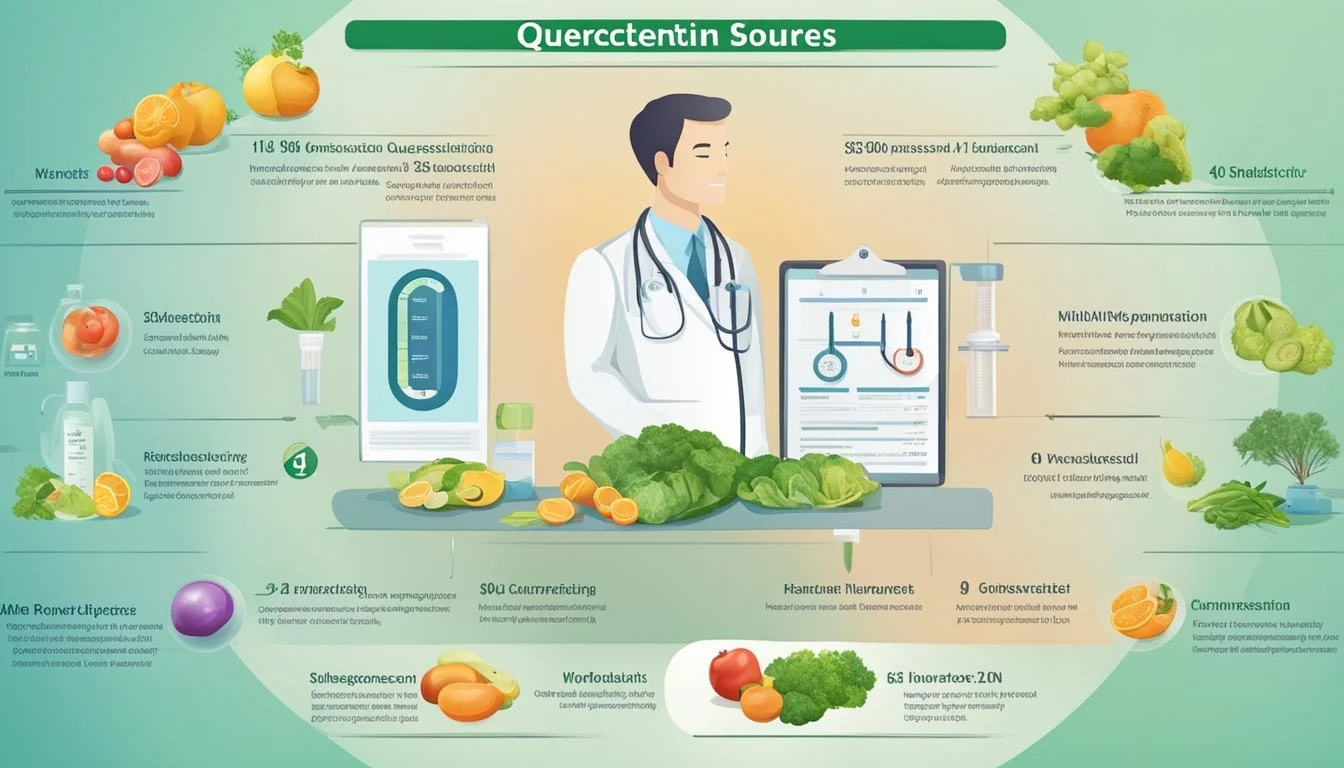What Are Some Good Sources of Quercetin for Managing Hypertension
A Nutritional Guide
Quercetin is a flavonol, a subclass of flavonoid compounds, which has drawn attention for its potential health benefits. It has been studied for its antioxidant properties and its role in cardiovascular health, particularly in the management of hypertension—a condition characterized by chronically elevated blood pressure that increases the risk of stroke and other cardiovascular diseases. This natural compound is commonly found in a variety of fruits and vegetables, making it accessible through a balanced diet.
Among the key dietary sources of quercetin are apples, berries, and onions. These foods, along with others like cherries, red leaf lettuce, and asparagus, not only contribute to a diverse and enriching diet but are also associated with a reduced risk of developing cardiovascular issues. Additionally, the presence of quercetin in certain vegetables like broccoli underlines the importance of varied plant-based foods for maintaining cardiovascular health. Consuming these quercetin-rich foods may offer a beneficial approach to managing high blood pressure and supporting overall cardiovascular well-being.
Understanding Quercetin
Quercetin is a bioactive flavonoid with a complex structure and notable health benefits, particularly related to its antioxidant properties and potential to manage hypertension.
Chemical Structure of Quercetin
Quercetin is characterized by a backbone consisting of two benzene rings (termed A and B rings) connected by a three-carbon bridge that forms a third ring (C ring). This structure is enriched with hydroxyl groups, which are responsible for its potent antioxidant capacity. A key feature of quercetin is its carbonyl group at the fourth position of the C ring, contributing to its reactivity with free radicals.
Flavonol Classification
As a member of the flavonoids, quercetin falls under the subclass of flavonols, a type of polyphenolic compound. Flavonoids are found abundantly in plants and contribute to their coloration. Quercetin, particularly, is a naturally occurring plant pigment that imparts color and possesses numerous metabolites, influencing numerous biological processes.
Health Benefits of Quercetin
Quercetin is renowned for its antioxidant and anti-inflammatory properties. It has been studied for its role in preventing chronic diseases and is of interest for its anticancer capabilities. With respect to cardiovascular health, quercetin is noted for its cardioprotective potential, suggesting a beneficial role in managing hypertension by counteracting the damage caused by oxidative stress to the cardiovascular system.
Quercetin and Hypertension
Quercetin, a polyphenolic flavonoid prevalent in plant-based foods, has gained attention for its potential to manage hypertension, a primary risk factor for cardiovascular diseases. Research indicates a positive impact on blood pressure levels, suggesting mechanisms of vasorelaxation and anti-inflammatory activity that benefit hypertensive patients.
Impact on Blood Pressure
Studies show that quercetin can lead to a decrease in both systolic and diastolic blood pressure in hypertensive subjects. Hypertensive animals and humans with blood pressure readings above 140 mm Hg systolic and 90 mm Hg diastolic exhibited reduction in blood pressure levels with quercetin intake. This evidence proposes that quercetin may serve as a beneficial supplement for blood pressure management.
Pathophysiological Mechanisms
Quercetin potentially addresses hypertension through several biological pathways:
Anti-inflammatory Activity: Quercetin is known for its capacity to reduce oxidative stress and inflammation, which are significant contributors to vascular diseases.
Angiotensin II Regulation: It interferes with the renin-angiotensin system, pivotal in blood pressure control.
Endothelial Function: By enhancing endothelial nitric oxide synthetase levels, quercetin promotes the relaxation of blood vessels.
Vasoconstriction: It suppresses endothelin-1 dependent contraction, aiding in preventing excessive narrowing of blood vessels.
Clinical Evidence
Clinical research involving quercetin has been extensive:
Randomized Control Trials: Controlled trials focusing on quercetin have indicated its effectiveness at reducing blood pressure in hypertensive patients.
Meta-Analyses: Data from a systematic review and meta-analysis of these trials have reinforced the findings, associating quercetin intake with significant improvements in blood pressure measurements.
The therapeutic potential of quercetin has been demonstrated across various research models, highlighting its relevance in clinical settings for addressing hypertension.
Nutrition and Quercetin
Quercetin is a flavonoid with potential health benefits, particularly in the management of hypertension. As a part of a nutritional strategy, it can be incorporated through a variety of foods and dietary patterns that emphasize polyphenol intake, or as a dietary supplement.
Food Sources High in Quercetin
Onions: They are an excellent source of quercetin, particularly red and yellow varieties.
Berries: Such as blueberries and cherries, are rich in this flavonoid.
Apples: Consuming them with the skin on maximizes quercetin content.
Red Leaf Lettuce: Along with other dark, leafy greens, contributes to quercetin intake.
Broccoli: This vegetable is not only high in quercetin but also other nutrients.
Tomatoes: Cherry tomatoes have a higher skin-to-flesh ratio and are a good source.
Dietary Patterns and Quercetin Intake
Maintaining a diet that is rich in fruits and vegetables enhances quercetin consumption. Dietary interventions that focus on Mediterranean or plant-based patterns boost flavonoid intake, which in turn could support blood pressure regulation.
Supplements vs Natural Sources
Dietary Supplement: While supplements can provide concentrated quercetin, the bioavailability might vary.
Natural Sources: They offer a constellation of other beneficial compounds and promote overall nutrition.
Incorporating quercetin into the diet through natural sources is generally encouraged due to the synergistic effect of the various bioactive compounds present in whole foods.
Optimal Quercetin Intake
Quercetin, a naturally occurring flavonoid, is known for its anti-inflammatory potential and has been under consideration for managing hypertension. The following subsections highlight the appropriate dosages, its specific role in hypertension management, and how it interacts with medications and nutrients.
Dosage Guidelines
When considering quercetin for health benefits, it is crucial to adhere to suggested dosage guidelines to avoid potential side effects and to maximize its potential. Studies suggest that for (pre)hypertensives or normotensives, an optimal dose ranges from 500 to 1000 mg per day, divided into multiple doses.
Quercetin for Hypertension Management
Quercetin's role in hypertension prevention and management is attributed to its capacity to modify the function of certain enzymes and metabolites that regulate blood pressure. It may help in BP lowering by enhancing vascular function. While research continues to substantiate these effects, it's imperative to consult healthcare providers for personalized advice.
Interaction with Medications and Nutrients
Quercetin can interact with various medications and affect their metabolism. It's important for individuals on medication, especially those for managing hypertension, to consult with a healthcare professional before adding quercetin to their regimen. This will ensure that there is no adverse interaction with current medications or nutrients being consumed.
Quercetin in the Context of Cardiovascular Health
Quercetin is a flavonoid found abundantly in many fruits and vegetables, and its significant potential for managing hypertension is propelled by its role in cardiovascular disease (CVD) prevention and modulation of key health parameters.
Quercetin's Role in CVD Prevention
Quercetin exhibits antioxidant and anti-inflammatory properties that are critical in the prevention of CVD. Research indicates that it can aid in the protection against the development of cardiovascular diseases by addressing endothelial dysfunction and reducing arterial stiffness. Furthermore, it influences lipid metabolism, which is a fundamental aspect of CVD prevention. For example, studies have shown that quercetin can lower LDL cholesterol and influence overall lipid profile, which may reduce the risk of atherosclerosis, a leading cause of heart disease and stroke.
Influence on Cardiovascular Disease Parameters
Regarding its influence on cardiovascular health, quercetin has been found to have blood-pressure-lowering effects. This is particularly significant for managing hypertension, which is a major controllable risk factor for cardiovascular diseases. The mechanism may involve the regulation of nitric oxide in the blood vessels, leading to vasodilation and improved vascular health. Blood pressure reduction can directly influence the strain on the heart and the progression of hypertensive heart disease.
Mortality and Morbidity Associations
Epidemiological studies suggest an association between higher quercetin intake and a reduction in mortality rates related to cardiovascular conditions. Regular consumption of quercetin-rich foods may contribute to a decreased risk of developing CVDs and, consequently, a reduction in CVD-associated morbidity. While direct links to improved mortality statistics are still being explored, the current evidence supports the potential benefits of quercetin as part of a heart-healthy lifestyle.
In summary, quercetin emerges as a beneficial compound in the context of cardiovascular health, with possible advantages for lipid regulation, blood pressure control, and overall disease prevention.
Limitations and Further Research
Clinical Trials: While the potential of quercetin in managing hypertension has been highlighted in various studies, larger-scale and more comprehensive clinical trials are necessary. Existing trials have provided some promising results, but the body of evidence needs expansion to solidify these findings.
Hypertensive Patients: It is crucial to evaluate the efficacy of quercetin in diverse populations, including those with differing severities of hypertension. The impact on specific hypertensive cohorts needs detailing to ascertain the extent of potential benefits across various demographics and comorbidity profiles.
Cardiovascular Disease: As quercetin has been associated with cardiovascular benefits, future studies should focus on long-term effects. Understanding how quercetin might influence broad outcomes in cardiovascular health is essential. The interrelationship between short-term blood pressure regulation and long-term cardiovascular event reduction remains an area ripe for exploration.
Meta-Analyses: Rigorous meta-analyses of the accumulated data on quercetin can help in evaluating its effectiveness in a quantitatively robust manner. Such analyses are paramount to distill the findings of numerous studies into actionable healthcare insights.
Researchers are advised to standardize the dosage and formulation of quercetin used in future trials to allow for more consistent and reliable comparisons. Furthermore, the bioavailability of quercetin and its metabolites should be considered, as different forms may have varying levels of absorption and efficacy.
The current evidence suggests potential, but the scientific community remains steadfast in the pursuit of definitive conclusions.
Conclusion
Quercetin has been recognized for its potential in managing hypertension. Clinical trials reveal that quercetin supplementation can lead to a significant reduction in blood pressure levels. These findings suggest that incorporating quercetin-rich foods into one’s diet could be beneficial for individuals with prehypertension or stage 1 hypertension.
The sources of quercetin vary, but they are predominantly found in plant-based foods. Common dietary sources include:
Green vegetables
Tomatoes
Apples
Berries
Onions
Green and black tea
In regions like China, traditional diets incorporate quercetin from tubers, sweet potatoes, and oranges, while Japanese diets obtain it from foods such as green tea and apples. The widespread availability of these foods makes quercetin an accessible option for those looking to manage their blood pressure through dietary means.
Researchers emphasize the importance of a balanced diet in conjunction with lifestyle modifications for optimal cardiovascular health. Quercetin's therapeutic effects, especially its anti-inflammatory properties, support its role in a broad strategy against hypertension. This strategy combines diet, exercise, and, when necessary, medication as advised by healthcare professionals.






